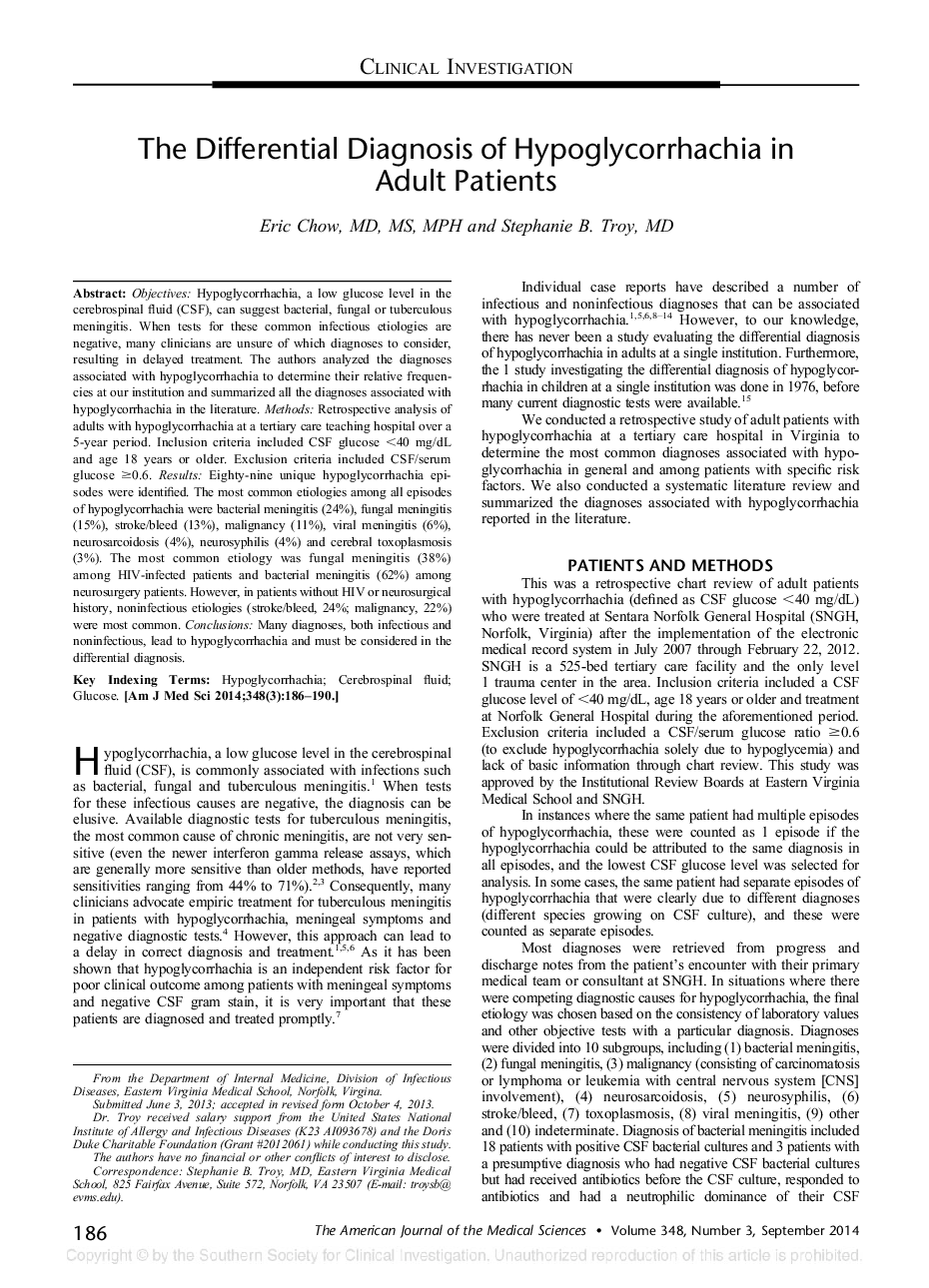| Article ID | Journal | Published Year | Pages | File Type |
|---|---|---|---|---|
| 2863324 | The American Journal of the Medical Sciences | 2014 | 5 Pages |
ObjectivesHypoglycorrhachia, a low glucose level in the cerebrospinal fluid (CSF), can suggest bacterial, fungal or tuberculous meningitis. When tests for these common infectious etiologies are negative, many clinicians are unsure of which diagnoses to consider, resulting in delayed treatment. The authors analyzed the diagnoses associated with hypoglycorrhachia to determine their relative frequencies at our institution and summarized all the diagnoses associated with hypoglycorrhachia in the literature.MethodsRetrospective analysis of adults with hypoglycorrhachia at a tertiary care teaching hospital over a 5-year period. Inclusion criteria included CSF glucose < 40 mg/dL and age 18 years or older. Exclusion criteria included CSF/serum glucose ≥ 0.6.ResultsEighty-nine unique hypoglycorrhachia episodes were identified. The most common etiologies among all episodes of hypoglycorrhachia were bacterial meningitis (24%), fungal meningitis (15%), stroke/bleed (13%), malignancy (11%), viral meningitis (6%), neurosarcoidosis (4%), neurosyphilis (4%) and cerebral toxoplasmosis (3%). The most common etiology was fungal meningitis (38%) among Hiv-infected patients and bacterial meningitis (62%) among neurosurgery patients. However, in patients without HIV or neurosurgical history, noninfectious etiologies (stroke/bleed, 24%; malignancy, 22%) were most common.ConclusionsMany diagnoses, both infectious and noninfectious, lead to hypoglycorrhachia and must be considered in the differential diagnosis.
